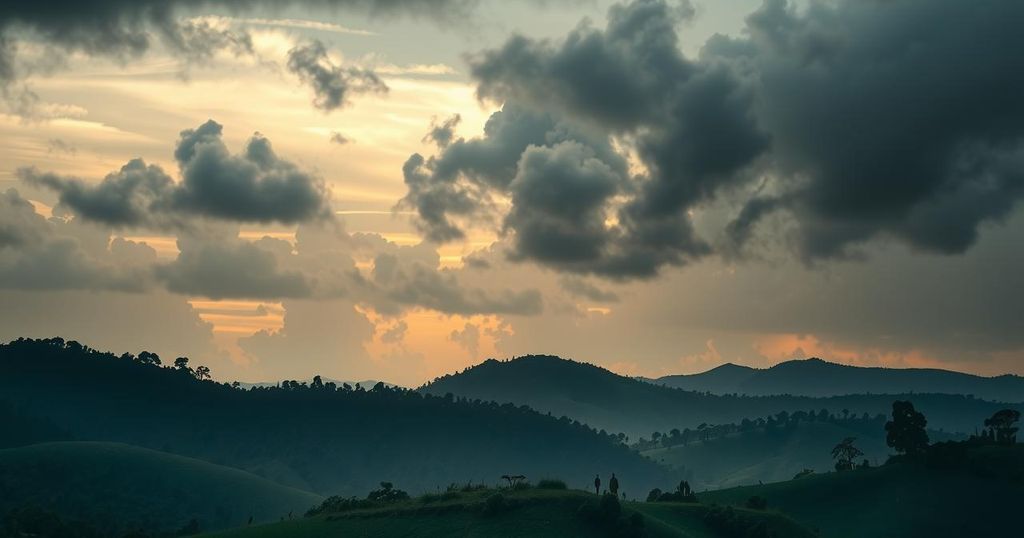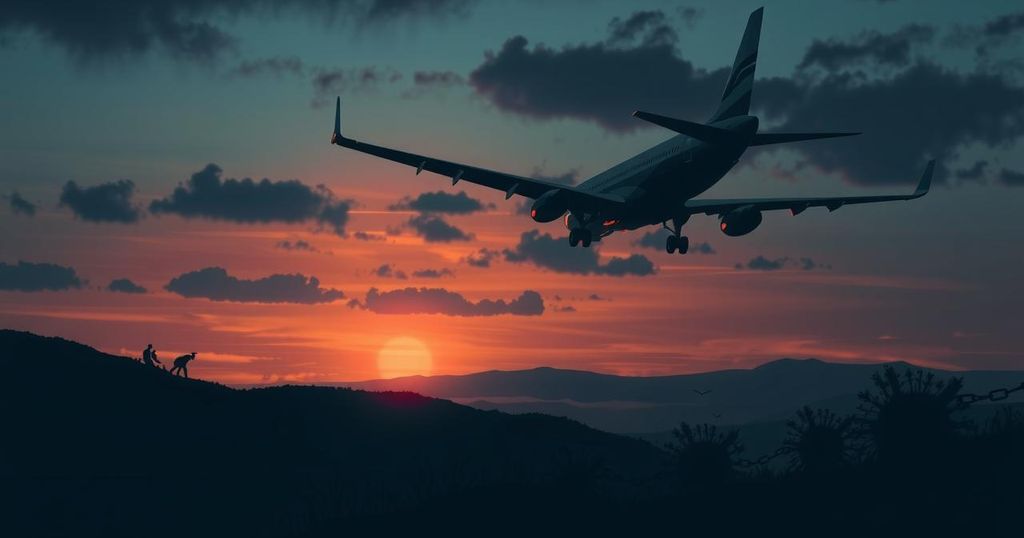Escalating Conflict in Eastern Congo: Rebels Approach Goma
Fighting in eastern Congo is intensifying as M23 rebels close in on Goma, the last government stronghold in the region. Thousands are displaced, and local hospitals are overwhelmed. The conflict has the potential to escalate into a wider regional war, raising serious humanitarian concerns for civilians caught in the crossfire.
Recent escalations in fighting in eastern Congo have seen rebels rapidly advance towards Goma, a pivotal city for the local government. The M23 rebel group, allegedly supported by Rwanda, has intensified its offensive, resulting in numerous casualties and significant displacement of civilians. Hospitals are overwhelmed as communities face the compounded dangers of warfare and humanitarian crises.
Residents of Goma, a city with a population of 2 million, are experiencing the immediate consequences of the conflict, with schools and businesses closing and increased military presence throughout the area. Following the death of North Kivu Governor Maj. Gen. Peter Cirimwami during a visit to the front lines, the situation remains volatile, with civilians increasingly vulnerable.
M23, or the March 23 Movement, has claimed significant territorial gains in recent weeks, heightening tensions in the mineral-rich region. This group emerged after Tutsi dissidents broke away from the Congolese military and has since pursued both military and political control, leading to accusations of Rwandan influence in the area. Their purported goals include protecting Tutsi interests amidst widespread allegations of resource exploitation.
Rwanda’s involvement has been contested, with accusations from Congo, the U.S., and the U.N. asserting Rwandan support for M23. Despite Rwanda’s denials, the presence of troops and missile systems has raised concerns about an escalated regional conflict. Experts warn that failure to address this tension could lead to severe implications for East Africa’s stability.
Over 400,000 individuals have been displaced due to the fighting, exacerbating already dire humanitarian conditions. Displacement centers are overwhelmed, leading to increased cases of disease among vulnerable populations. Individuals like Jean Claude Bauma share harrowing experiences of fleeing violence, indicating a persistent cycle of conflict that grips many families in the region.
The strategic importance of Goma lies in its role as a trade and humanitarian hub, making its capture by rebels a significant blow to the Congolese government. Past experiences reveal the potential for increased suffering and human rights abuses should Goma fall again under rebel control. Concerns from various humanitarian organizations highlight the risks posed to essential services, emphasizing the urgent need for intervention to protect civilians and humanitarian workers stationed in the area.
The ongoing conflict in eastern Congo, particularly the tensions involving the M23 rebel group and the Congolese government, stem from deeper historical issues surrounding ethnic tensions and the control of rich mineral resources. The region has been plagued by persistent violence and the emergence of over 100 armed groups vying for power. This conflict has led to repeated humanitarian crises, compounding existing challenges for civilians caught between rival forces.
The situation in eastern Congo remains precarious as the M23 rebels continue their advances towards Goma, highlighting the urgent need for increased international attention and humanitarian assistance. The implications of this conflict extend beyond immediate military concerns, encompassing severe humanitarian consequences that affect countless civilians. The potential repercussions of Goma’s fall underscore the importance of sustained efforts to mitigate violence and protect vulnerable populations from further harm.
Original Source: apnews.com




Post Comment